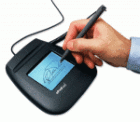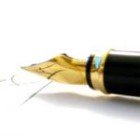Signature history
Identification by a signature made with a mouse

Some years ago British researchers worked out the system of identification of a person by his signature made with a computer mouse.
Electronic Digital Signature

Traditions of encryption date back to ancient times: it was emperor Julius Caesar who invented the code named after him. However, the history of electronic digital signatures is not that long.
Electronic digital signature is a succession of symbols which appeared as a result of cryptographic transformation of electronic data.
Federal Law of the Russian Federation on the electronic digital signature
Passed by the State Duma on 13 December 2001
Approved by the Federation Council on 26 December 2001
Federal Law of the Russian Federation
of 10 January 2002, No 1-FL
ON THE ELECTRONIC DIGITAL SIGNATURE
Signature: new trends

Signature reflects human personality, it is a way of self-expression. In the century of computer technologies new trends and signature are deeply connected. Signature evolves according to new trends but still continue to exist as a category.
From times immemorial (history of signatures)

The signatures have their own value and history in various cultures. In Japan, for instance, the masters often put their autographs (the so-called “seals”) on their works: such author’s items were much more valuable than the ones manufactured at plants. In Europe masters used to put their handwritten signatures on the works.
Calligraphy is a kind of music not for the ears, but for the eyes.
(V. Lazursky)





